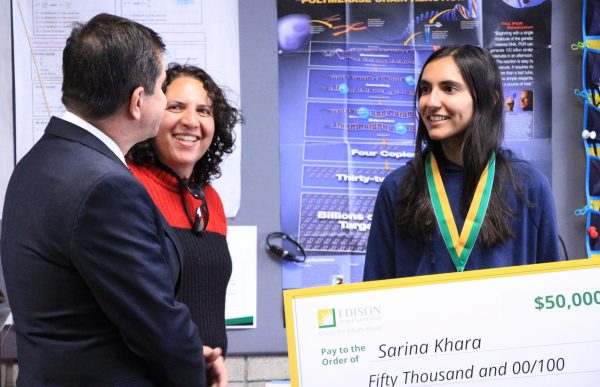Juniors begin CAASP testing
April 14, 2022
It’s testing season at Burroughs!
Beginning this week, juniors are taking their Smarter Balanced ELA, math and science tests to demonstrate their academic progress in the California State Standards.
“CAASPP testing is a measure of how our students are learning and how successful our teachers are teaching,” said Principal Carrie Cope. “We want our students to do well, so we know they are learning the material.”
This will be students’ first testing opportunity to see how they have improved since eighth grade.
Last year’s juniors mostly experienced CAASPP remotely from their own homes, where they were subject to potential distractions and an unfamiliar remote testing interface. This year’s testing has returned to its in-person format on
Chromebooks, and teachers have been able to prepare students with practice exams.
“For many, Distance Learning stymied the growth in confidence, focus, and skills that we typically see in in-person learning,” said English Teacher Rosemary Gilbert. “With test prep, I celebrate those small successes, like the student who, two months ago, said ‘No Way!’ to taking the test and went on to complete the practice exam as well as many other assignments–that shows grit and confidence and focus, and that’s the test prep for life!”
In previous years of CAASPP testing, Burroughs High School has outperformed Kern County’s average test performance.
Although the average scores are higher for the overall reports for Burroughs, some individual students still worry about specific content they will be asked to recall.
“Since classes become so selective in junior year, I feel like broad topics like grammar and algebra might be harder to answer,” said junior Emma Kimbler. “Especially in honors or AP classes, the questions we are used to answering are very select rather than broad like the tests suggest.”
Despite such concerns, teachers and students have been working to ensure that their scores are as optimal as can be through a variety of resources, including test-taking strategies.
“Students worked through a CAASPP sample performance task, and then we spent time analyzing the rubric to determine how points are allocated during scoring,” said Math Chair Katie Wadley. “We feel that it is essential for students to understand the importance of answering all parts of a question, stating their answers clearly, and justifying their reasoning with mathematics.”
With the proper practice available, many felt confident.
“The performance tasks that we practiced in class I think are going to go a long way in helping me answer the questions on the test,” said junior Amanda Ngo.
Even students without a math class were given the opportunity to review strategies before the exam.





